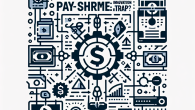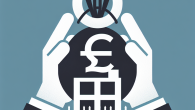
Digital-First Finance: Are the Neobanks Truly Inclusive?
The High Price of “Free”: How Hidden Fees Are Quietly Draining Your Wallet
If I had a dollar for every time someone told me they got a “great deal,” only to discover a surprise fee slapped onto the checkout page, let’s just say I’d be sipping a hand-pressed cappuccino on a Tuscan balcony. Hidden fees are the financial equivalent of glitter—everywhere, sneaky, and almost impossible to clean up. But today, we’re putting on our advocacy hats and rolling up our sleeves to uncover the truth behind one of the most underhanded consumer exploitation tactics in the modern economy.
What Are Hidden Fees, and Why Should You Care?
Hidden fees are charges added to the cost of a product or service after the price has been advertised. You’re lured in by a low rate, only to be blindsided by additional charges during checkout or billing. These fees aren’t just annoying—they’re a calculated strategy by companies to manipulate consumer behavior while inflating profits under the radar.
The Psychology Behind the Trap
Companies count on the fact that once you’ve made a decision—booked that flight, chosen that streaming plan, or signed up for a gym membership—you’re less likely to back out when fees suddenly appear. It’s called the “sunk cost fallacy.” You’ve come this far… may as well finish the transaction, right? That hesitation costs you—emotionally and financially.
Industries Where Hidden Fees Run Rampant
Unfortunately, no industry is completely innocent. But here are a few usual suspects:
- Airlines: Baggage fees, seat selection fees, “preferred boarding”—many of these weren’t even a thing 15 years ago.
- Telecom: Your $49.99/month cable deal? After “network enhancement fees” and “administrative surcharges,” you’re looking at $78.
- Hospitality: Hotels tuck “resort fees” into your final bill—even if you never set foot in the gym or use the Wi-Fi.
- Ticketing Platforms: Concert tickets advertised at $50 can balloon to $80 with “processing” and “convenience” fees.
The Cost to Consumers
According to a report by the National Economic Council, Americans spend tens of billions of dollars per year on junk fees. And let me put on my financial policy glasses for a moment: these fees disproportionately affect low- and middle-income individuals, exacerbating existing inequality. When you’re barely scraping by, an unexpected $12 fee isn’t just irritating—it hurts.
Who Actually Benefits?
This probably won’t shock you—corporations are the primary beneficiaries. By disaggregating costs, companies make their initial offers seem cheaper, only to rake in profits on the backend. And unlike taxes or tips, these fees often go straight into the pocketbooks of corporate shareholders, not toward any “service enhancement.”
The Role of Legislation (Or Lack Thereof)
I wish I could say the law had your back, but consumer protection laws around hidden fees are patchy at best. There’s a growing call for standardization and transparency in pricing, but regulation tends to move—how shall I put this delicately?—slower than a sloth on a Sunday morning.
Recent Legislative Shifts
- California’s Truth in Advertising Law: Requires all mandatory fees to be disclosed upfront in certain industries. Cheers to progress!
- The White House’s Junk Fee Initiative (2023): Encourages transparency but lacks federal enforcement teeth—for now.
- FTC Actions: The Federal Trade Commission is investigating deceptive fee practices, though widespread regulation is still pending.
How You Can Protect Yourself
Okay, enough doom and gloom. Here’s what you can do—yes, you, savvy consumer—to shield your wallet from these stealthy drains:
- Read the Fine Print: Always scroll to the terms and conditions. It’s not sexy, but it’s smart.
- Compare Total Costs, Not Just Sticker Prices: Don’t be lured by low base rates. Calculate the out-the-door price before committing.
- Speak Up: Contact customer service and ask if a fee can be waived. Polite persistence sometimes works miracles.
- Use Fee-Tracking Apps: Tools like Truebill or Rocket Money can alert you to recurring and hidden charges.
- Support Transparent Businesses: Vote with your wallet. Patronize companies committed to full pricing transparency.
The Power of Consumer Advocacy
Here’s where I roll up my cardigan sleeves and get feisty: the only way we change this broken system is by demanding better. And that means making noise—file complaints with the Consumer Financial Protection Bureau (CFPB), leave honest reviews, write to your local representatives, and don’t underestimate the power of a social media call-out.
It’s easy to feel powerless in the face of corporate sleight-of-hand, but every dollar you spend is a vote for the kind of marketplace you want. Don’t just scroll past the fine print—highlight it, screenshot it, and ask, “Why are you charging me this?” You have more leverage than you think.
Final Thoughts
Hidden fees might be everywhere, but they aren’t inevitable. With a little vigilance, a sprinkle of outrage, and a healthy dose of financial know-how, we can flip the script. Transparency shouldn’t be a luxury—it should be the standard.
So the next time a “$19.99” service becomes $32.98 at checkout, just remember Eleanor “Ellie” Cartwright’s golden rule: if the price smells fishy, don’t take the bait.
Need help fighting back or have a fee horror story you think deserves a spotlight? Reach out via our Contact Us page or learn more About Us. Let’s make financial fairness louder—together.









Leave a Reply